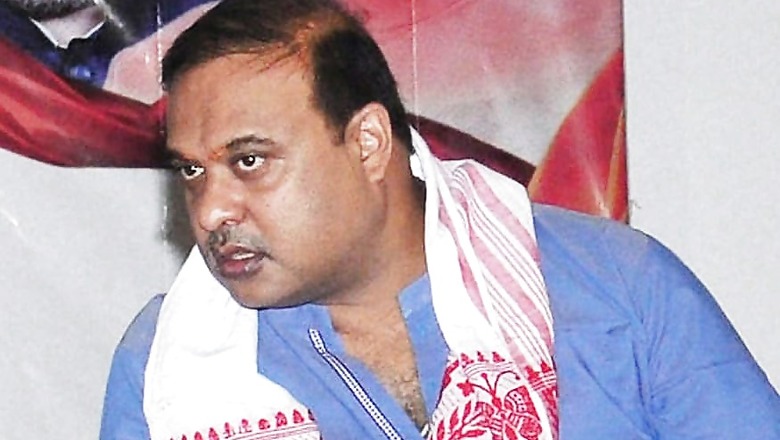
views
After months of waiting for the government to respond, two members of a committee appointed to compile a report for the definition of 'Assamese' and policies for the preservation of the community’s identity and language have leaked the recommendations to the media, triggering a debate over whether the vexed issue would be resolved soon.
The high-powered committee which was appointed by the home ministry in July last year has suggested 1951 as the cut-off year for identifying citizens in Assam who may be called Assamese.
The 141-page report, leaked by the All Assam Students’ Union (AASU) and senior advocate Niloy Dutta, is replete with recommendations for safeguarding the Assamese culture and language. It suggested that land rights in Assam be restricted only to the Assamese communities and reservation of 80-100 per cent of seats in the assembly, local bodies and Parliament.
A day after it was made public, senior Assam BJP leader and minister of health and finance Himanta Biswa Sarma indicated the government’s reluctance to accept the report immediately. He told reporters that the state assembly must approve the definition of Assamese.
Clause-VI was incorporated into the Assam Accord for safeguarding the Assamese identity and language but it had remained unimplemented so far. Whatever recommendations are implemented in the state to achieve the purpose will bring it closer to the regime in the neighbouring hill states and some border states in the northern region. Citizens belonging to the indigenous communities would have greater rights than those hailing from the other states.
Why is BJP Dragging The Issue?
The BJP is on the back foot in Assam for non-performance, corruption and non-implementation of the promises declared ahead of the assembly polls. Its policies have triggered more agitations and unrest than the previous regimes in the state.
There are widespread rumours that two top leaders have decided to change their constituencies for the forthcoming assembly polls next year. Apparently, Tezpur is one seat that is being focused upon by one of the leaders if some BJP functionaries are to be believed.
The party high-command is well versed with the situation in the state and the challenges to be faced in the elections from the two new coalitions of non-BJP parties. While many senior functionaries of the Congress have already decided to join hands with the AIUDF and CPI(M), AASU and another prominent student organisation, AJYCP, have begun the spadework to form a new regional party.
Against the backdrop of these developments, the BJP cannot antagonise the non-Muslim and non-Assamese voters including the large chunk of Bengali Hindus who are already aggrieved over the National Register of Citizens (NRC). Implementing Clause-VI of Assam Accord could open a Pandora’s box that could lead to more unrest in the state at a time when the Covid-19 pandemic is yet to be controlled.
However, given the non-performance of the government, the BJP knows that sops would have to be doled out to the electorate ahead of the polls in a manner different from the previous elections.
In all likelihood, the plan would be ready by the end of December after a flurry of meetings with the central leaders. Granting scheduled tribe status to the six communities, accord with the pro-talks ULFA faction and efforts to expedite the pre-poll tie up between the AIUDF and Congress could be focused upon by the BJP.
The party’s strategy could also be to implement as many recommendations of the Clause-VI Committee as possible through other means so as to prevent the AASU from garnering the credit. ULFA’s charter of demands overlaps with many recommendations of the committee.
Is 1951 As Cut-Off Year Possible?
The report has triggered discussions and reactions among various circles in Assam on the merits and demerits of the recommendations. Certainly, the pro-immigrant lobbies both in the state and elsewhere are alarmed over the possibility of reduced rights for the communities in the future.
Murmurs have been heard about the drawback of accepting 1951 as the cut-off year for a definition of the Assamese.
The report does not spell out the policy for identification and whether another exercise similar to the NRC would have to be conducted or the documents that would have to be produced to establish citizenship.
It has often been argued that the NRC of 1951 could be accepted as the base document but it could fuel more complications and controversies. A study conducted by senior journalist Mrinal Talukdar revealed that 35 per cent of Assam’s current population is not covered by the 1951 register. Some districts such as Sivasagar, Cachar and Karbi Anglong were excluded when the exercise was hurriedly executed 70 years ago.
So, as some people have suggested informally, an easier alternative could be to identify the indigenous communities in the state for the definition of Assamese. In this procedure as well there would be many issues to be resolved.
For instance, what are the rights to be given to the non-Assamese communities who had settled in the state before 1971? Although they may not be called Assamese but depriving them of certain rights could trigger a massive controversy and stall the process.
Another issue which may not be as complex is the identification of the ethnic Assamese Muslims to check efforts made by sections of immigrant Bangladeshi Muslims to put themselves in this category. The BJP had indicated its plan of a census to fulfill the objective but the details of the proposed exercise are not yet known. In all likelihood, it has been put on the back burner for the time being and it will gain prominence ahead of the assembly polls.




















Comments
0 comment